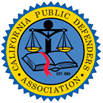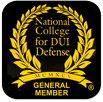Overview of Child Molestation Crimes
Generally speaking, child molestation crimes target and prohibit conduct that is physically, sexually, and/or emotionally harmful to children. Listed below are some of the most common child molestation crimes in California.
Lewd Acts On a Minor – P.C. 288
Under Penal Code §288, a person is prohibited from willfully touching a child (under 14 years old), and/or willfully forcing the child to touch himself, in a lewd manner with the intent of arousing, appealing to, or gratifying the lust, passions, or sexual desires of the person and/or the child. Notably, “touching” includes touching bare skin, as well as touching through clothes.
A key element of this section is the use of the word, “willfully.” Specifically, “willfully” means that the perpetrator committed the act intentionally or on purpose. This means that the perpetrator doesn’t need to intend to break the law—instead, he only needs to deliberately commit the act in order to satisfy the “willfully” component of this section. This also means that unintentional or accidental touching does not qualify as “willful” and therefore is not illegal.
Due to the ambiguity of this section, a wide variety of offenses can be charged under P.C. §288. Indeed, most child abuse/molestation incidents are charged under this section.
Statutory Rape – P.C. 261.5
Under this section, it is unlawful for an adult to have sexual intercourse with someone who is under 18 years old. This section is only applicable if the perpetrator is not married to the victim at the time of the sexual intercourse. Additionally, with regard to this statute, the extent of the sexual penetration is irrelevant.
It’s also worth noting that even if the minor consented to or initiated the sexual intercourse, the adult can still be charged since consent is not relevant here in the way that it is with other rape crimes. Put more succinctly, the key issue in this crime is not whether the victim directly consented, but instead, whether the victim was a minor (which therefore means that the victim did not have the capacity to give legal consent).
Child Endangerment – P.C. 273(a)
Generally speaking, P.C. §273(a) prohibits an adult from hurting a child, or from allowing the child (through circumstances or specific conditions) to become hurt or to have an increased risk of getting hurt. Under this section, this crime can be charged as either a felony or a misdemeanor, depending on severity of the harm/risk of harm.
Abuse of Child – P.C. 273(d)
P.C. §273(d) prohibits physical child abuse. Though the term “child abuse” is broad, this section specifically prohibits cruel or inhuman physical punishment, as well as inflicting injury on a child that results in a traumatic condition. Cruel or inhuman punishment can include hitting or punching a child, throwing something at a child, choking a child, pushing or kicking a child, etc.
Importantly, California does not consider disciplinary spanking to be child abuse, unless the spanking was unnecessary and/or unreasonable given the situation. Additionally, “traumatic condition” is not as dramatic as it sounds—it simply means injuries caused by physical force, even if the injury is as minor as a scratch.
Sex With a Child Under 10 – P.C. 288.7
P.C. §288.7(a) prohibits adults from engaging in sexual intercourse and/or sodomy with children 10 years old or younger. Similarly, P.C. §288.7(b) prohibits adults from engaging in oral copulation and/or penetration with children 10 years old or younger.
Notably, even slight contact between the mouth of one person and another person’s sexual organ/anus qualifies as “oral copulation,” and even slight penetration qualifies as “sexual penetration.” Additionally, proof of ejaculation is not required for this crime, nor is proof of penetration of the mouth, sexual organ, or anus required.
Possession of Child Pornography – P.C. 311
Under P.C. §311, it is unlawful for someone to knowingly participate in distributing, possessing, producing, publishing, duplicating, selling, or printing child pornography. For purposes of this section, child pornography includes material that depicts a minor (under 18 years old) participating in or simulating sexual conduct.
Annoying or Molesting a Child – P.C. 647.6
P.C. §647.6 prohibits an individual from annoying or molesting a child under 18 years old. For purposes of this section, “annoying or molesting” means that the perpetrator engaged in conduct that would disturb, irritate, offend, or injure a normal person, and that her conduct was motivated by an unnatural or abnormal sexual interest in the minor.
Penalties for Child Molestation
Lewd Acts On a Minor – P.C. 288
- If the child is under 14 years old, the crime is a felony and the penalty is imprisonment in state prison for 3, 6, or 8 years.
- If the perpetrator uses force, violence, duress, or fear of bodily injury to commit the crime (including when the victim is a dependent), the crime is a felony and the perpetrator faces state imprisonment for 5, 8, or 10 years.
- If the child is 14 or 15 years old, and the perpetrator is at least 10 years older than the child, the matter can be charged either as a felony or a misdemeanor. If a felony, then the perpetrator is guilty of a public offense and will be imprisoned in state prison for 1, 2, or 3 years or in county jail for up to one year. If the matter is a misdemeanor the maximum sentence is one year in the county jail.
- Regardless of the specifics of the offense, any defendant who is convicted under P.C. §288, has a lifetime duty to register as a sex offender. In addition, this offense is a strike under the California Three Strikes law.
Statutory Rape – P.C. 261.5
- This crime is a wobbler and can be charged as either a misdemeanor or felony.
- If the perpetrator is less than 4 years older than the victim, the crime will be a misdemeanor. However, if the perpetrator is at least 4 years older than the victim, then the crime can be charged as a misdemeanor or a felony.
- If charged as a misdemeanor, the perpetrator faces up to 1 year in county jail, and up to $1,000 in fines.
- If charged as a felony, the perpetrator faces formal probation, up to 1 year in county jail, up to 3 or 4 years in state prison (depending on the ages of the perpetrator and the victim), and/or up to $10,000 in fines.
Actual Case
Client, a twenty year old was accused of statutory rape of his sixteen year old girlfriend. The prosecution insisted on prosecuting this matter although the girlfriend told the police that the contact was consensual. We took this case to trial and after a four day jury trial the jury found our client not guilty of the offense.
Child Endangerment – P.C. 273(a)
- This crime can either be a wobbler or a straight misdemeanor offense. Specifically, if the child endangerment offense related to a risk of great bodily harm or death to a child, then the crime is a wobbler and can be charged as either a misdemeanor or a felony. If the crime didn’t involve that risk of harm or death to the child, then the crime is a misdemeanor.
- If charged as a misdemeanor, the perpetrator faces up to 1 year in county jail, and up to $1,000 in fines.
- If charged as a felony, the perpetrator faces 2, 4, or 6 years in state prison, and up to $10,000 in fines.
Actual Case
Client was charged with hitting her seven year old step-daughter with a stick when spanking her, and leaving marks on the child. The child had a continuous history of misbehaving, and lesser measures of discipline had been tried, but had failed. We put together a number of submissions to the D.A. demonstrating client’s upstanding support in the community, as well as the child’s records of disciplinary measures at school. Still, the D.A. insisted on prosecuting the matter. We set the matter for trial, but on the eve of trial, the District Attorney offered client diversion and a dismissal upon successful completion of two classes. The client, who worked with children, was able to retain her job.
Abuse of Child – P.C. 273(d)
- This crime is a wobbler in California so it can be charged as either a misdemeanor or a felony. Factors that influence how the crime is charged include the perpetrator’s criminal history as well as the alleged incident itself, including the relationship of the parties involved and extent of the abuse.
- If charged as a misdemeanor, the perpetrator faces up to 1 year in county jail, up to $6,000 in fines, probation for at least 3 years, treatment programs, and/or a protective order.
- If charged as a felony, the perpetrator faces 2, 4, or 6 years in state prison, up to $6,000 in fines, formal probation for at least 3 years, and/or additional time depending on the perpetrator’s past convictions.
- Notably, if the perpetrator has a prior conviction under P.C. §273(a), her sentence will be increased by 4 years unless the defendant previously served her prison term more than 10 years ago, and she has not been imprisoned for any other felonies in the past 10 years.
Sex With a Child Under 10 – P.C. 288.7
- If convicted of engaging in sodomy or sexual intercourse with a child, the perpetrator faces 25 years to life in state prison, as well as registration as a lifetime sex offender.
- If convicted of engaging in oral copulation or sexual penetration with a child, the perpetrator faces 15 years to life in state prison, as well as registration as a lifetime sex offender.
Possession of Child Pornography – P.C. 311
- The penalties for child pornography offenses vary a great deal depending on the particular details of the situation.
- If charged as a misdemeanor, the perpetrator faces up to 1 year in county jail, and a fine of up to $2,500.
- If charged as a felony, the perpetrator faces state imprisonment for 16 months – 8 years, as well as a fine of up to $100,000.
- Either way, any child pornography conviction requires the perpetrator to register as a lifetime sex offender.
Annoying or Molesting a Child – P.C. 647.6
- As a wobbler, this crime can be charged as a misdemeanor or as a felony.
- If charged as a misdemeanor, the perpetrator faces up to a year in county jail, as well as a fine of up to $5,000.
- If charged as a felony, the punishment includes state imprisonment for 16 months – 3 years, as well as a fine of up to $5,000.
Actual Case
My client was accused of molesting his eleven year old step-daughter. (Name excluded due to privacies concerns). Although client had confessed to the offense we were able to mount an effective defense by providing substantial evidence in mitigation. We put together a packet demonstrating client’s stellar job history and many letters of recommendation from family, friends, and other professional and social contacts. In addition, we arranged for treatment for client and were able to provide a report from his therapist as to therapeutic advances that he was making. Finally, we had our client evaluated by a psychologist who rendered the opinion that our client was not likely to re-offend. As a result of our defense we were able to keep our client out of prison, and instead he was placed on probation with a county jail sentence.
False Accusations
It is extremely vital that parents, guardians, teachers, therapists, and anyone else who works with children take children’s accusations of molestation or abuse seriously. This is especially true in light of how vulnerable children can be, particularly when the perpetrator has an emotional relationship with the victim. That being said, false accusations are not uncommon. Children can be influenced to make false accusations because they are seeking attention from a loved one, expressing frustration or taking revenge, trying to avoid an adult they are scared of, and repeating accusations they’ve heard from an adult or on television. As such, if someone is falsely accused of child abuse or molestation, it is vital that he seek assistance in working on an effective defense.
Additional Defenses
Defenses for child molestation crimes vary depending on the elements of the particular crime in question. However, in addition to false accusations, other common defenses for these crimes include:
- The sexual contact was inadvertent or accidental. This is a valid defense when the crime requires that the perpetrator touched the child willfully, such as P.C. §288.
- The child was abused, but was manipulated into identifying the wrong attacker.
- The adult’s touching was unrelated to any sort of sexual intent or interest. This is an effective defense when the crime’s elements require that the touching was related to sexual interest or intent, such as P.C. §288 and P.C. §647.6.
HOW WE CAN HELP
I have been practicing criminal defense for over 35 years. I have represented people on hundreds of criminal cases and have a proven record of success. I will begin by combing the police reports for any helpful information and inconsistencies and then will meet with you to discuss your side of the story and to determine possible defenses. I employ a team of investigators, legal researchers, and expert witnesses that will help present the strongest possible case. Often, in their attempt to find someone responsible for a crime the police will arrest the wrong person. Sometimes the police will take an innocent situation and charge someone with a crime. I served for over sixteen years as a Judicial Officer of the Sacramento Superior Court and have established key relationships that can be used to greatly benefit my clients. I will aggressively fight for you to get you the best possible result on your assault case including taking the case to trial if needed. Call our criminal attorney at (916) 779-3500 or email us at Contact@foosgavinlaw.com for a no-cost initial consultation.















